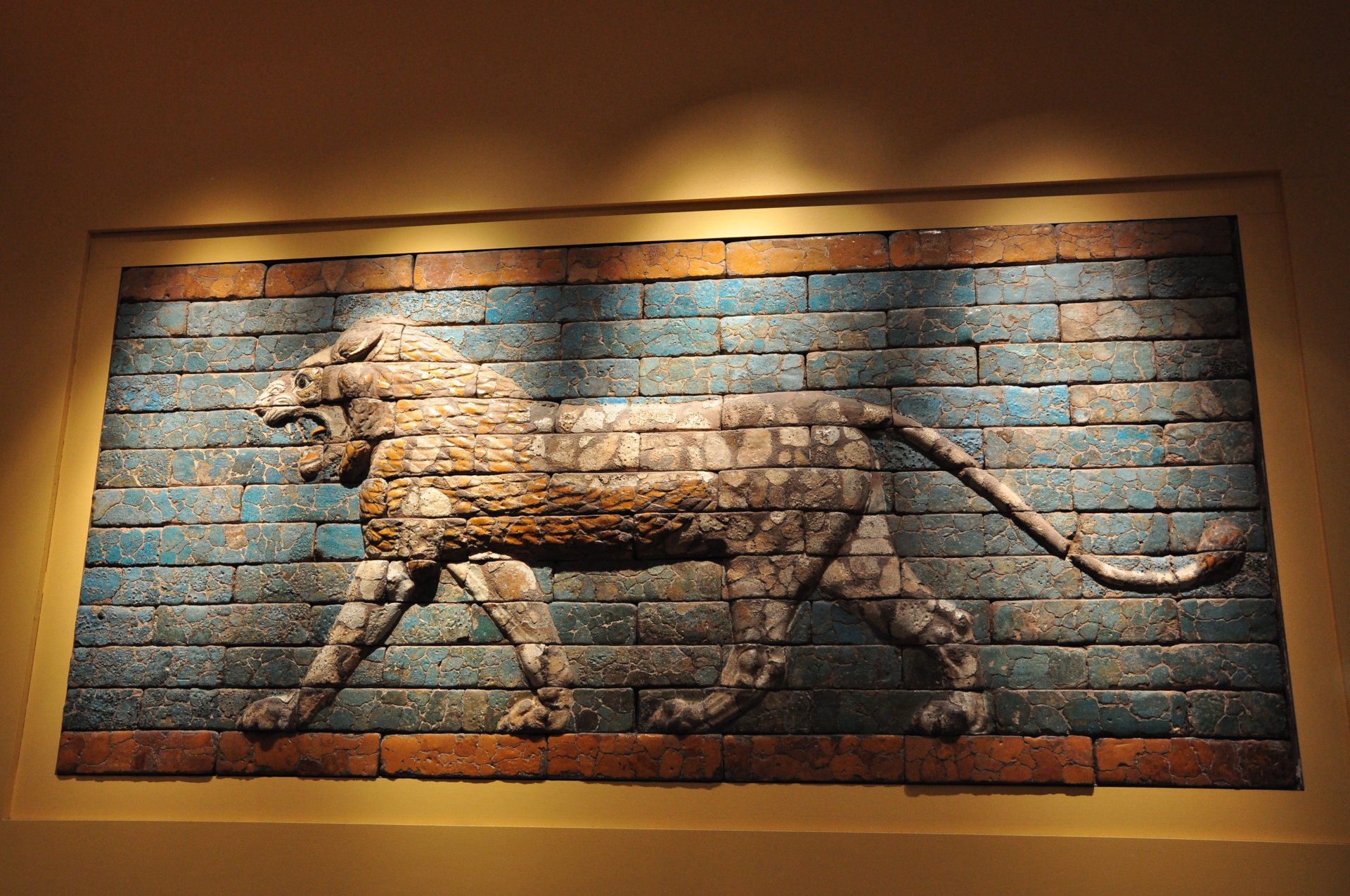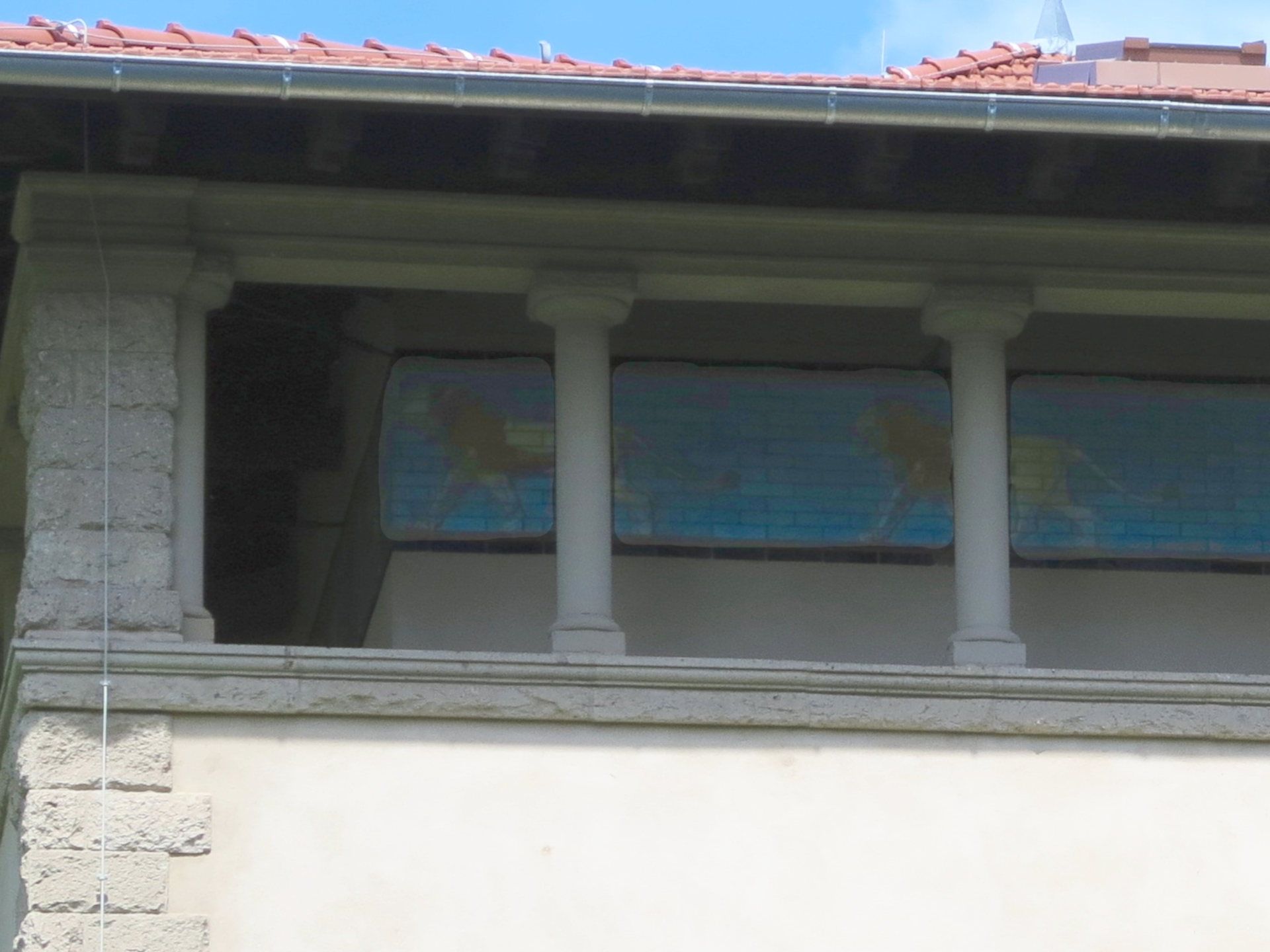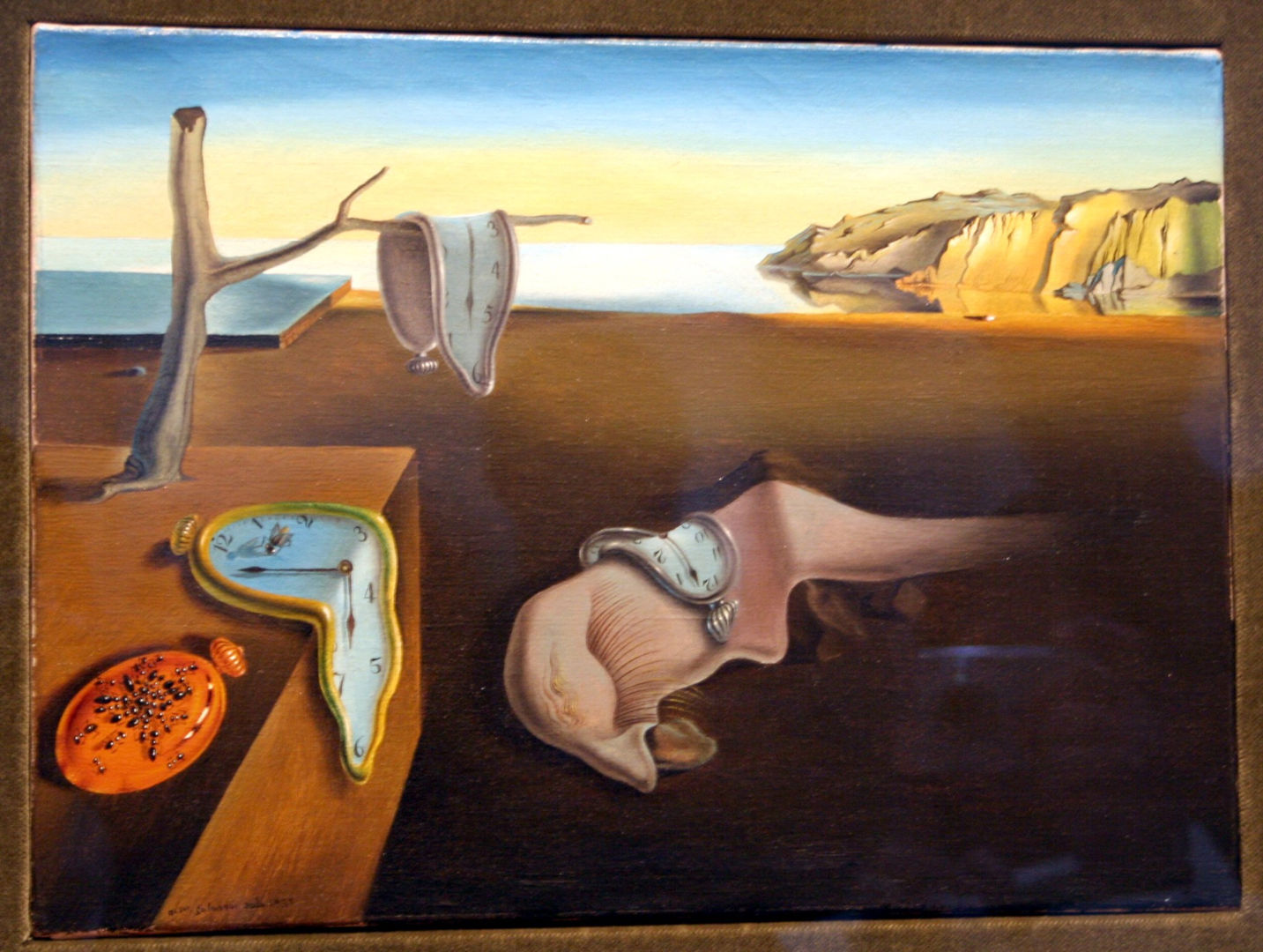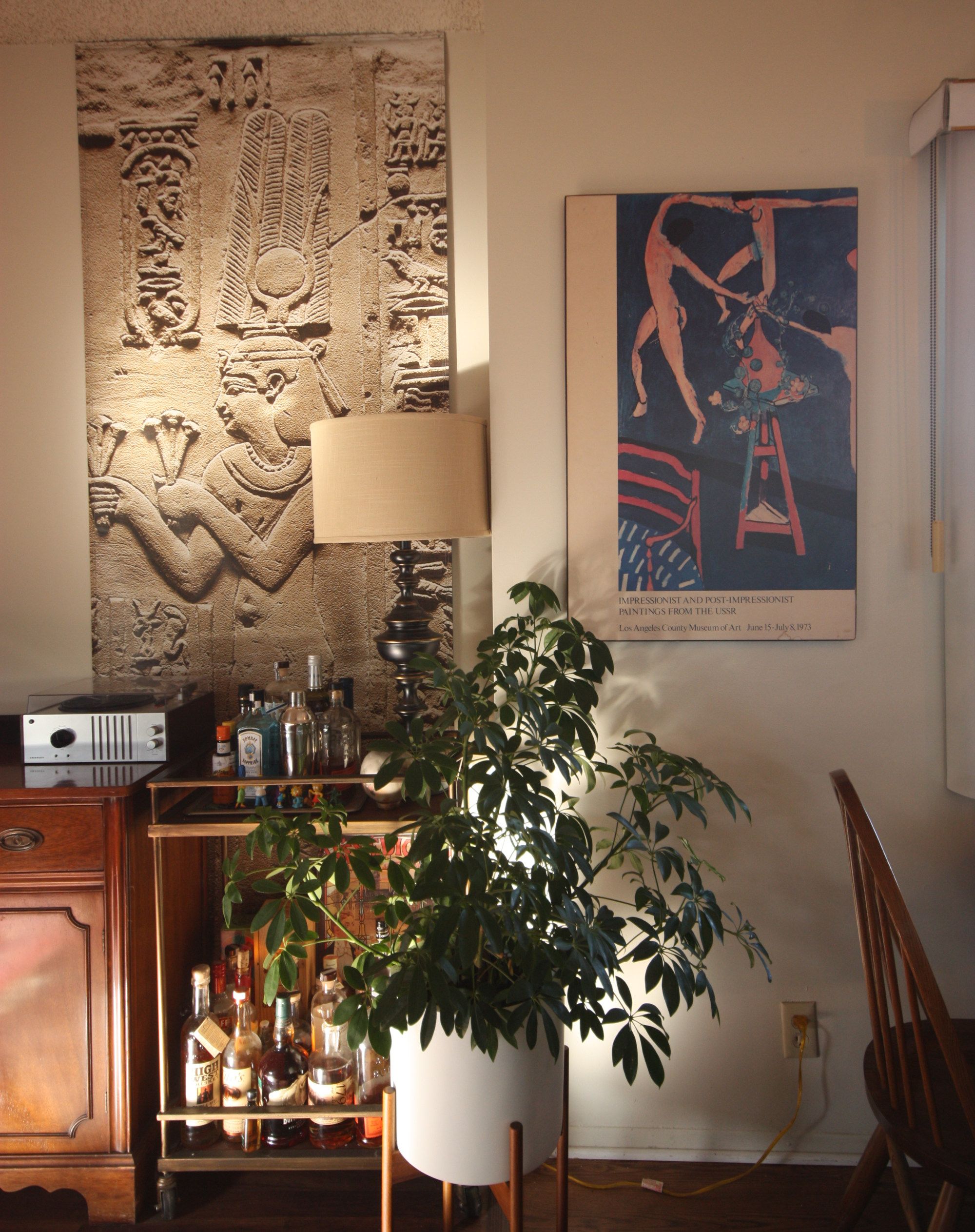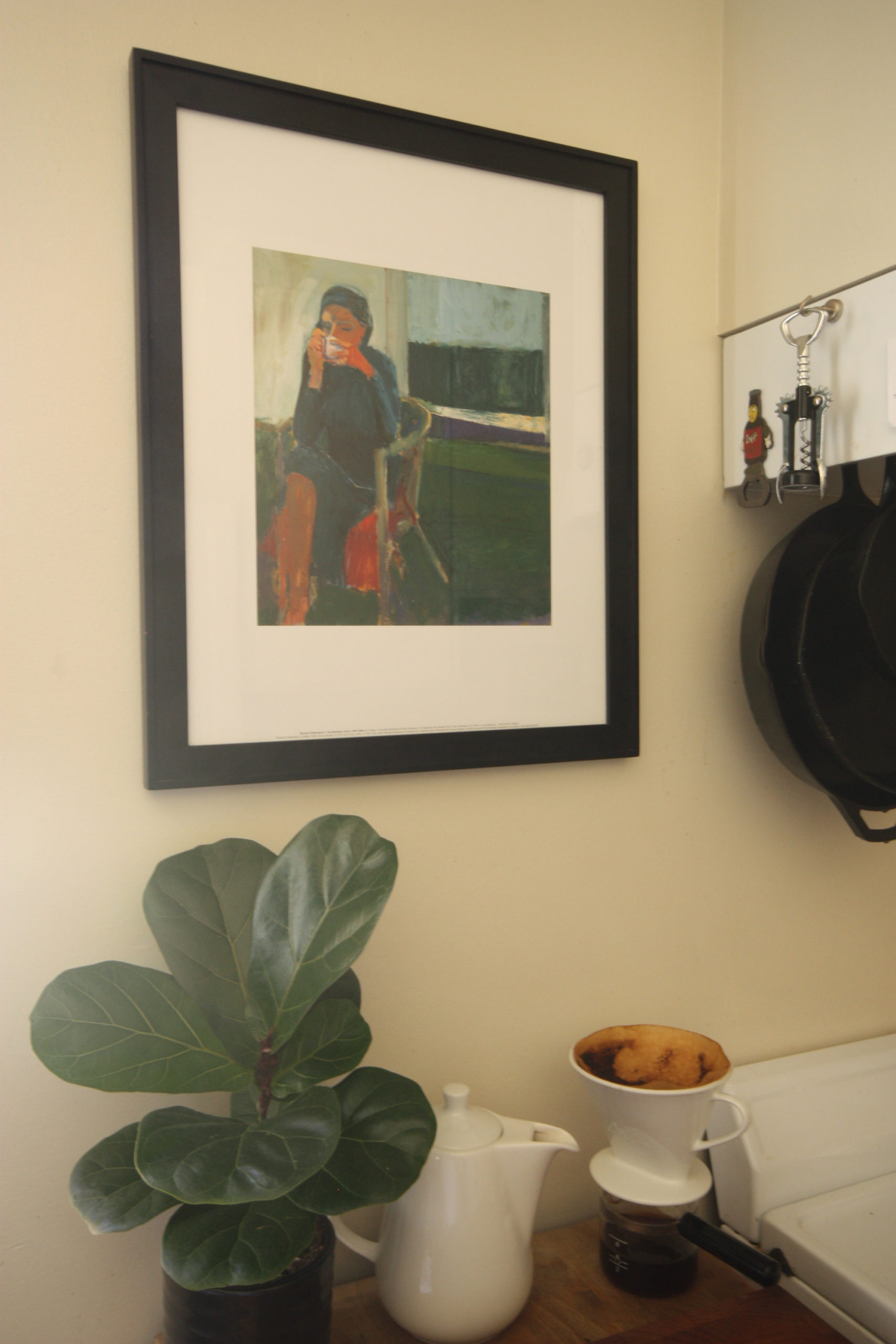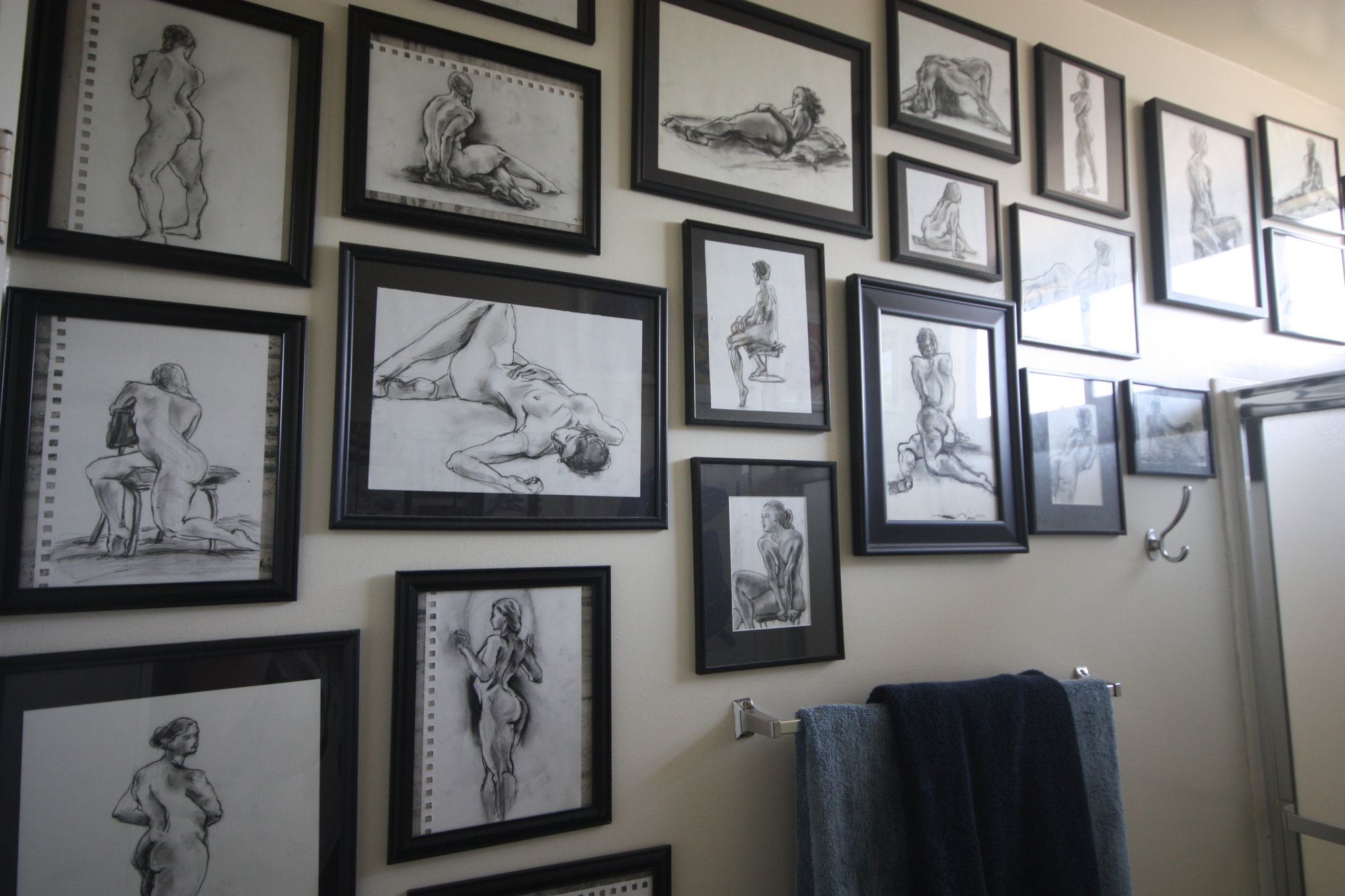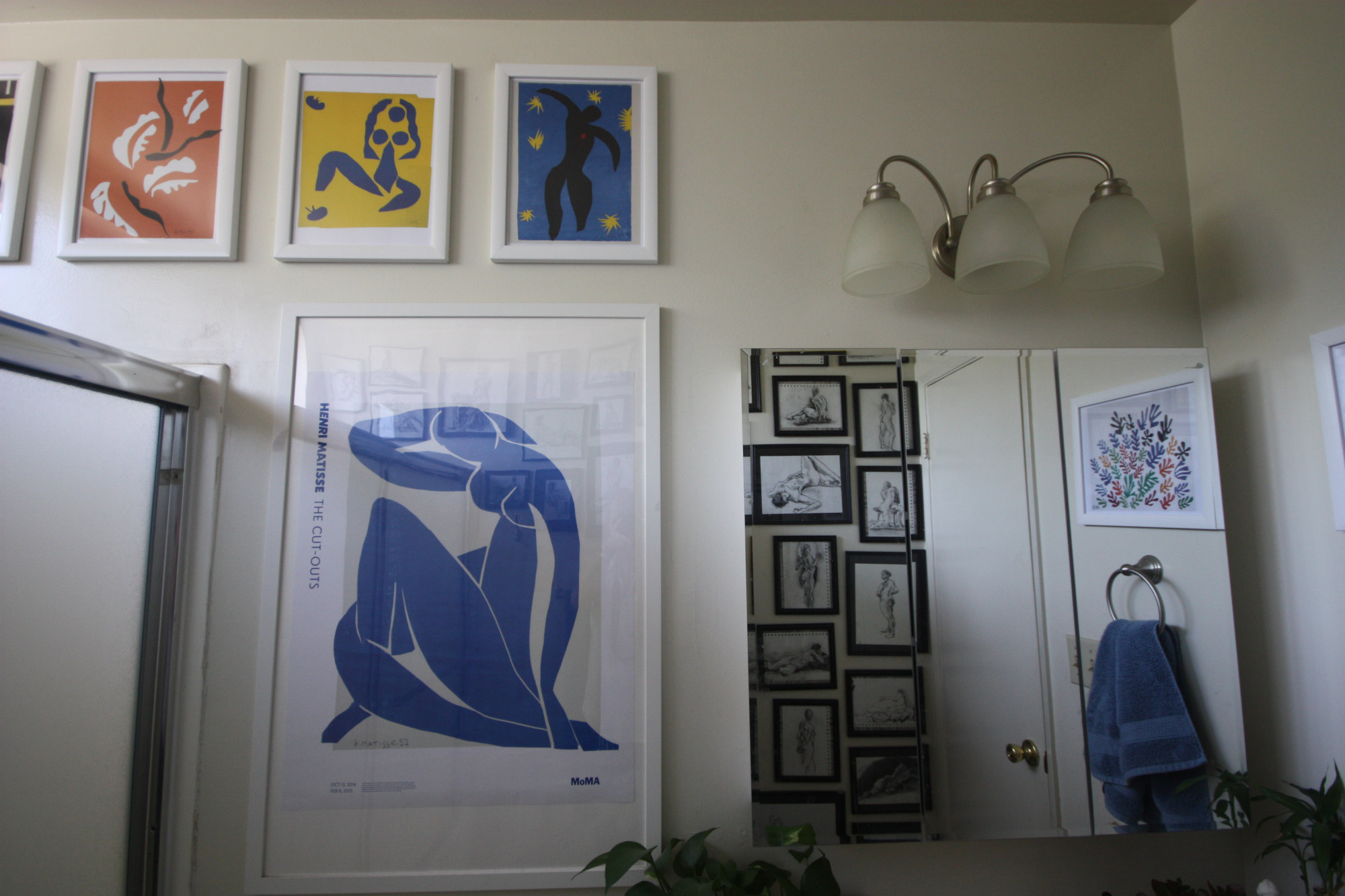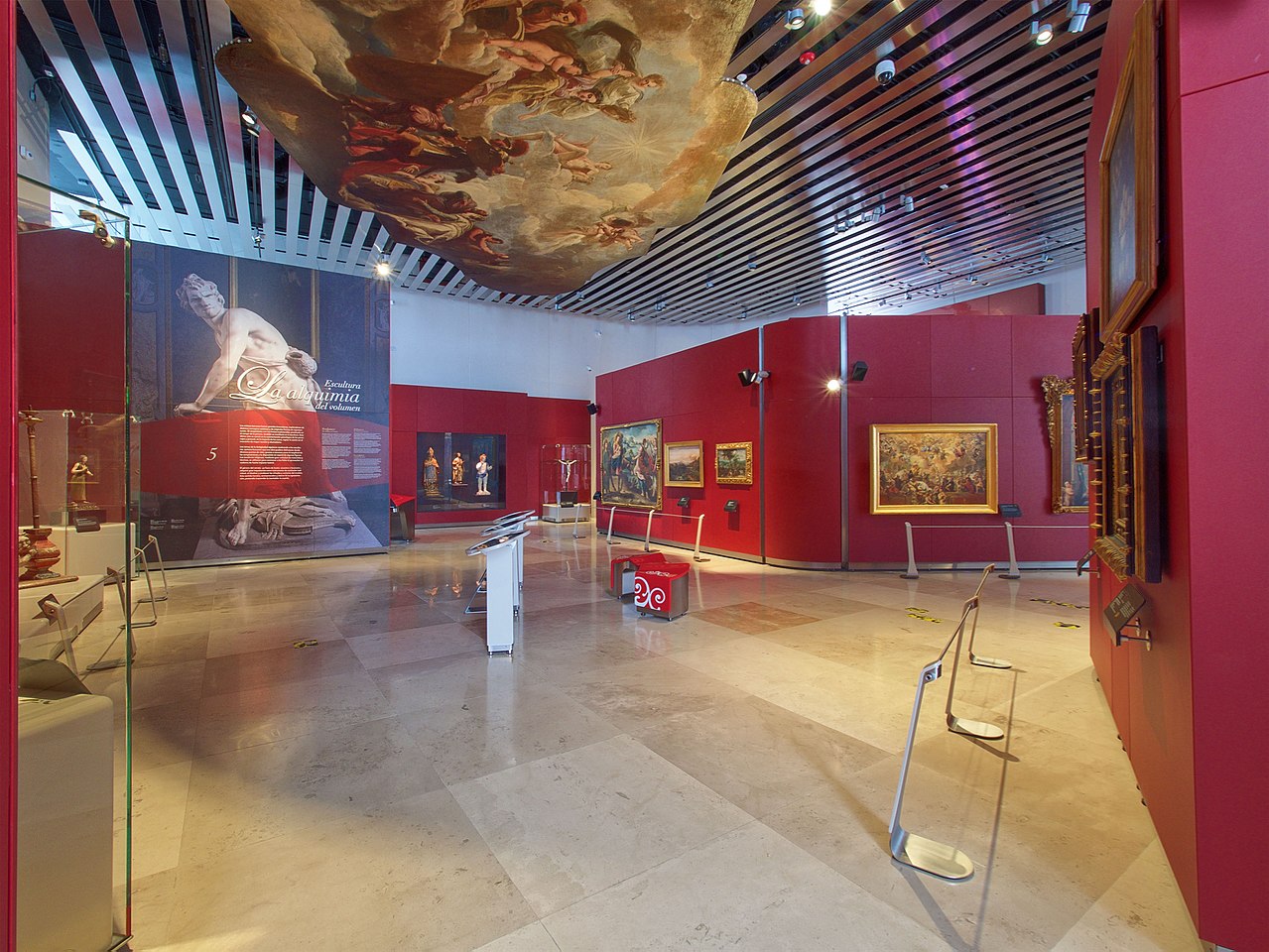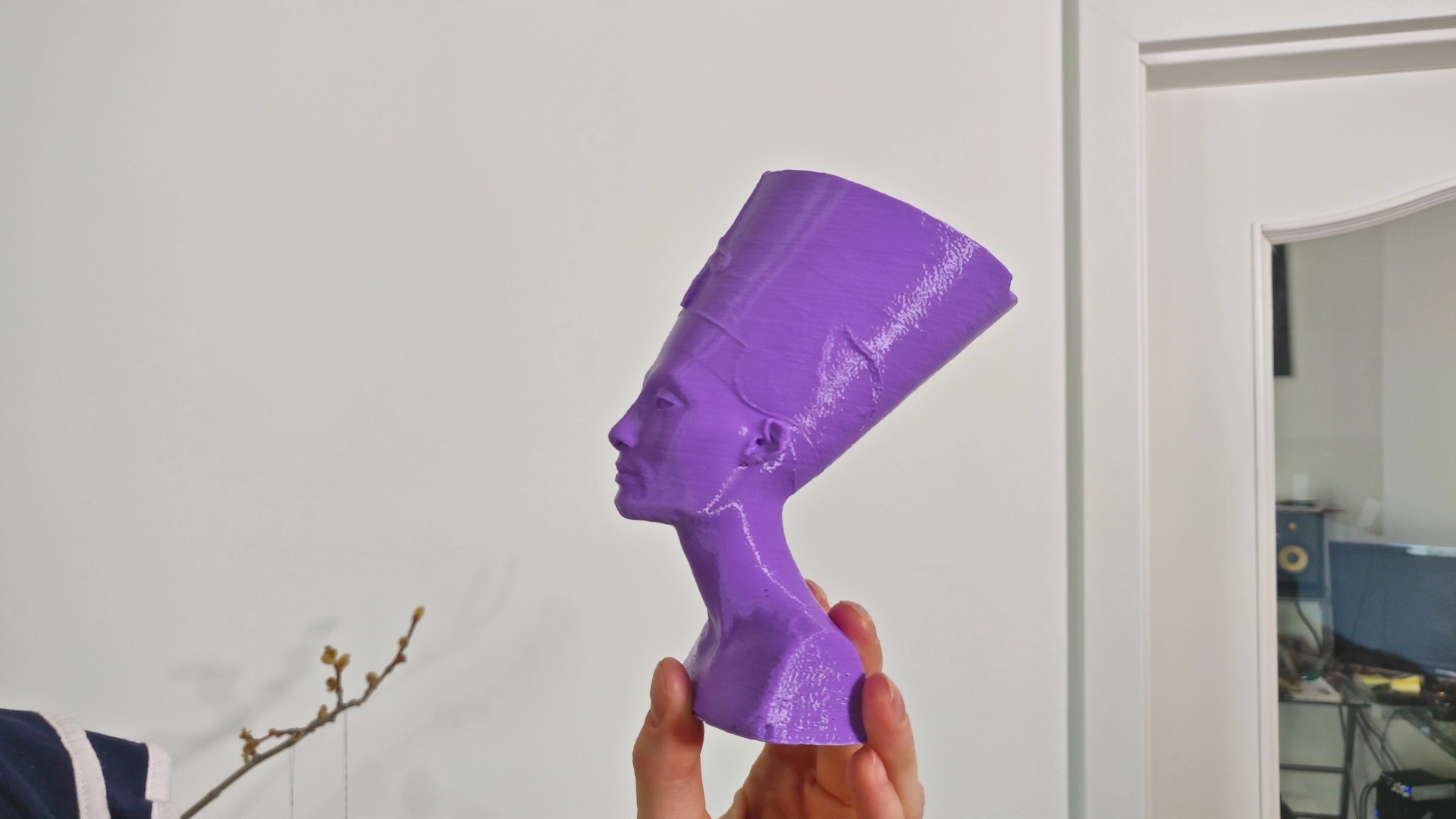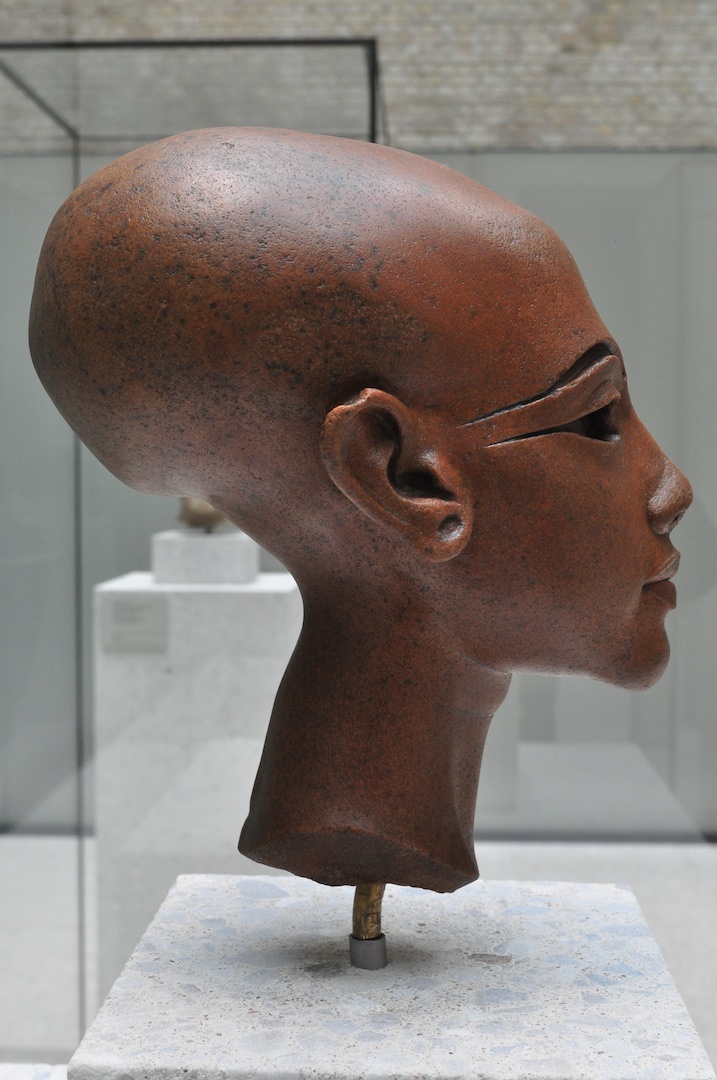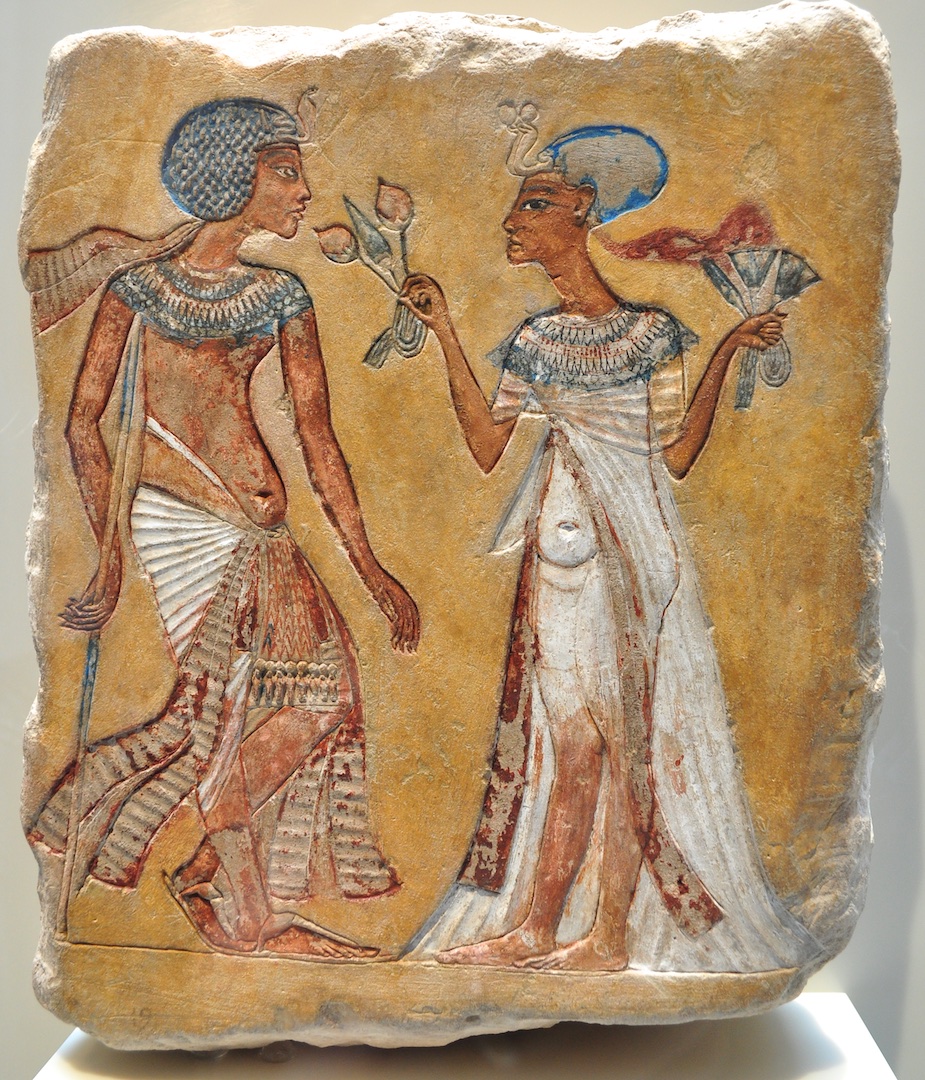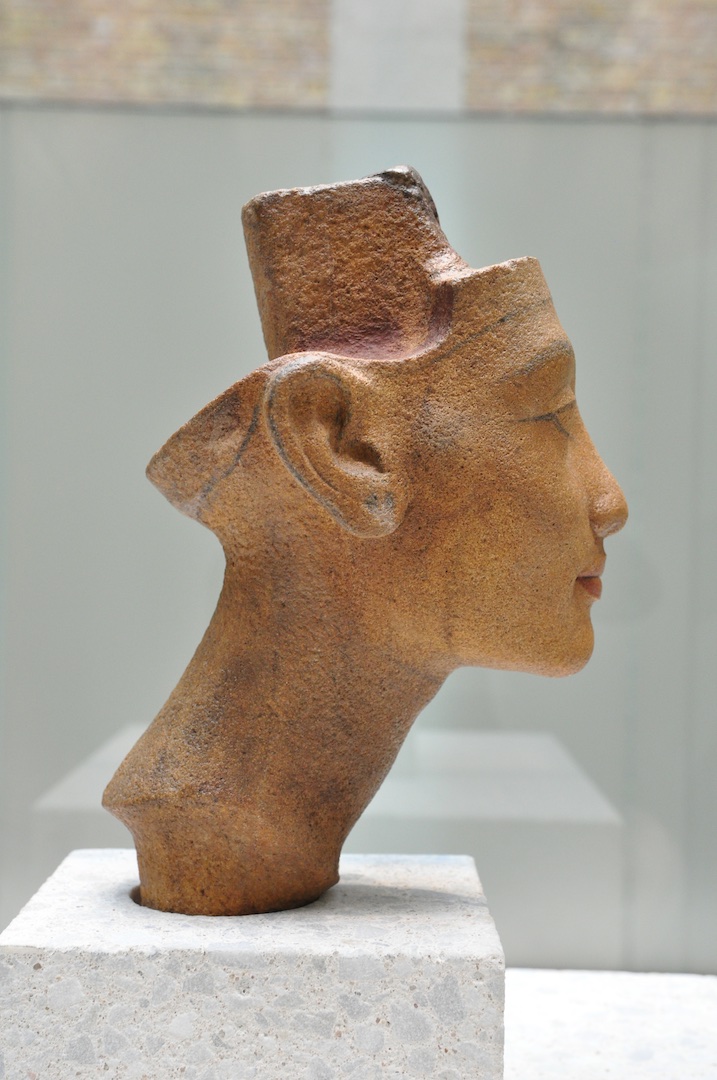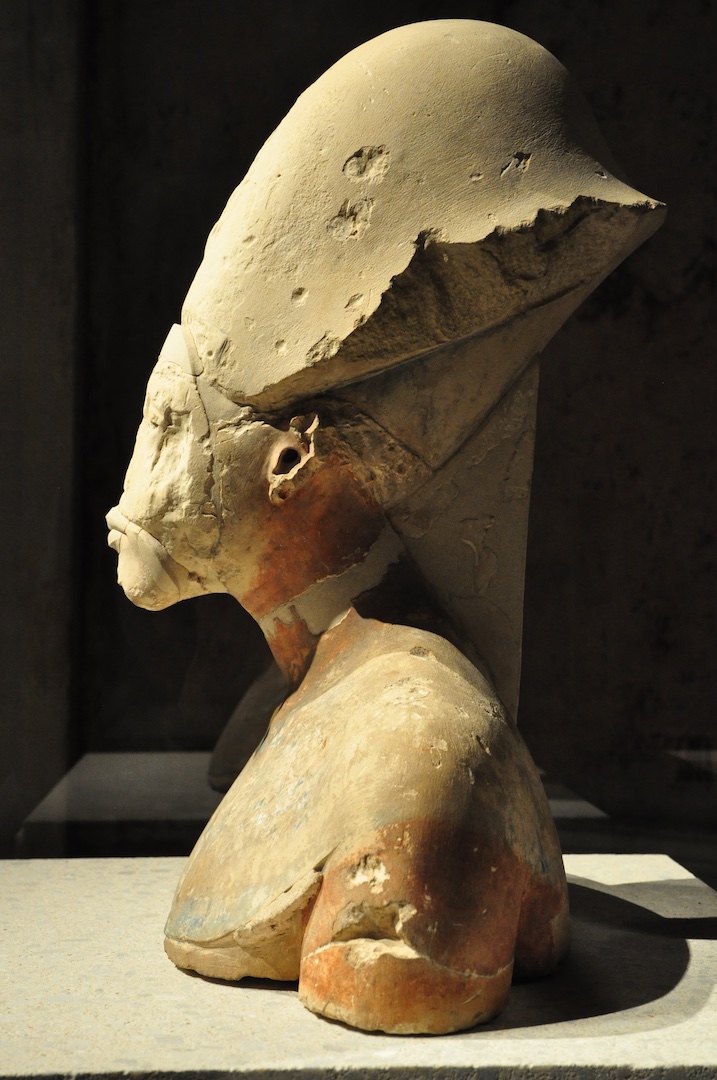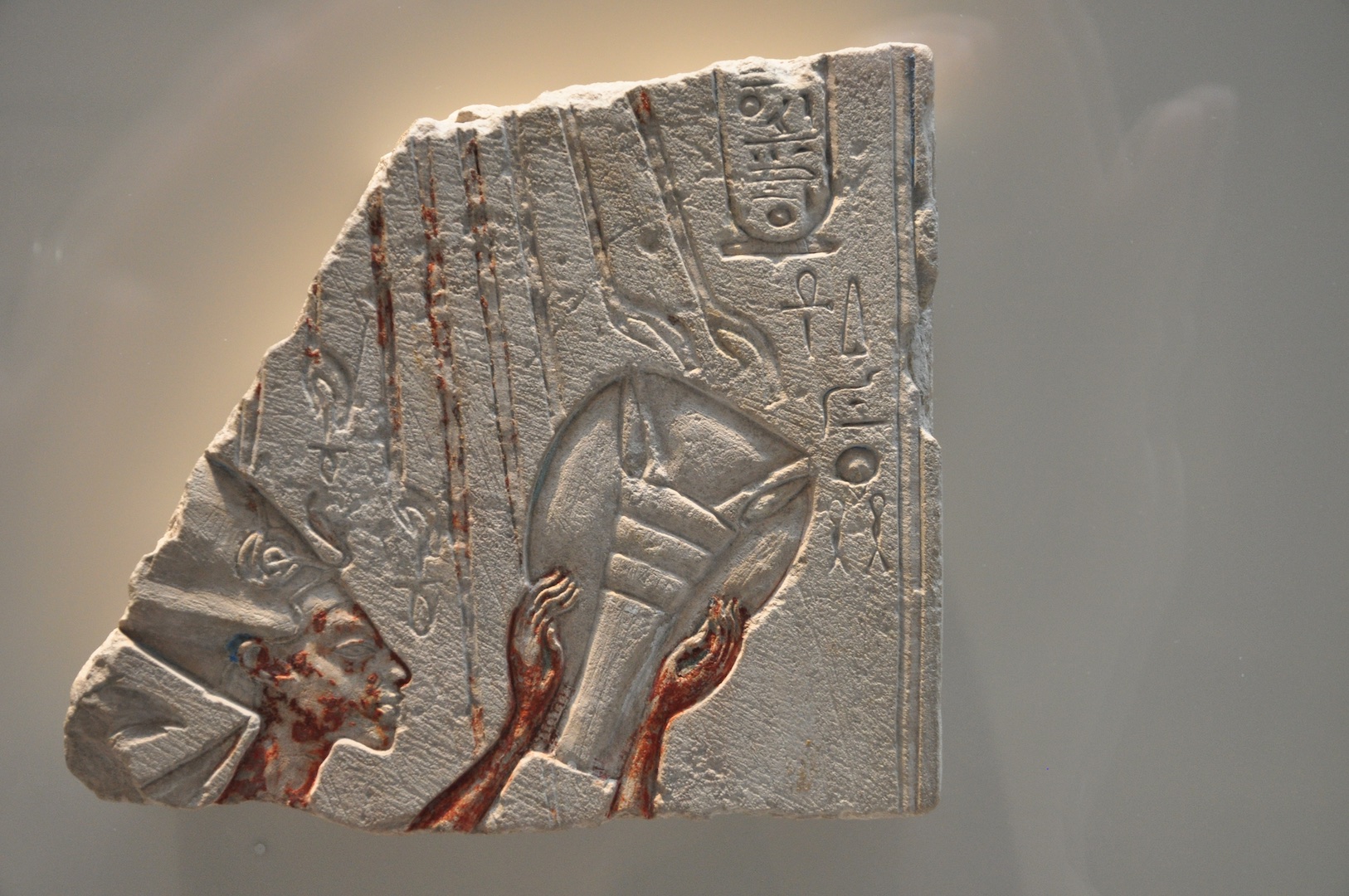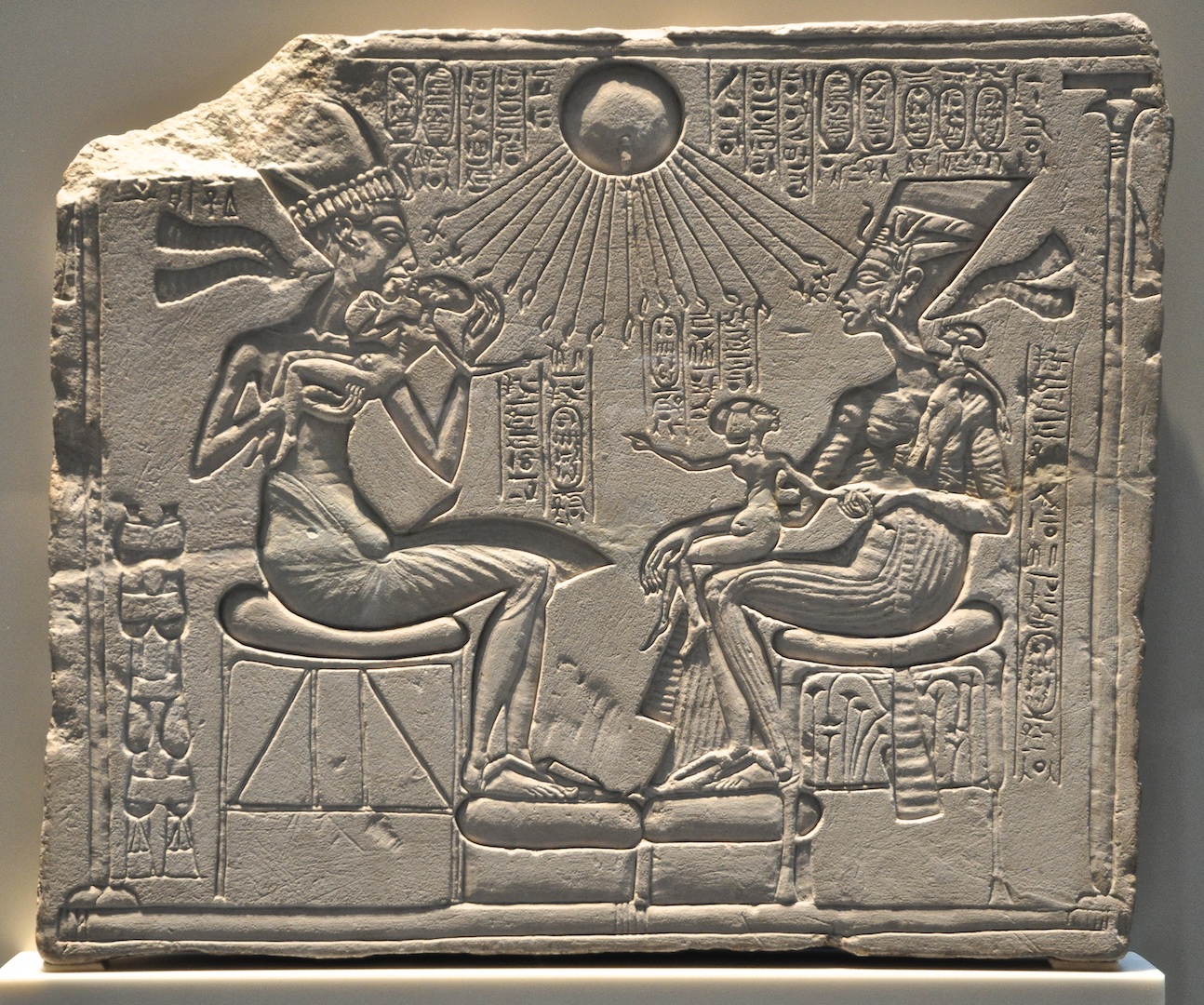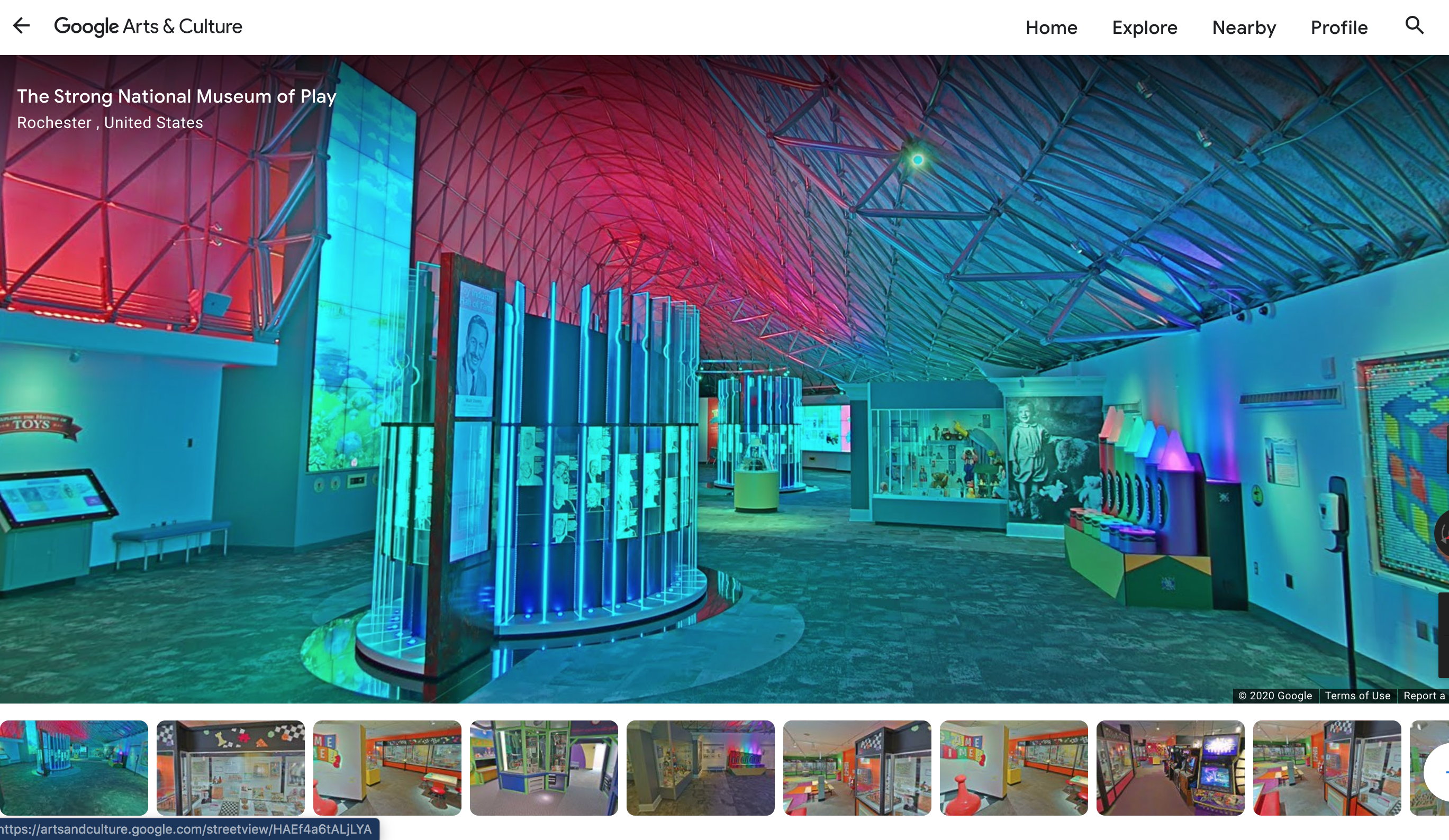When Will Museums Reopen?
As institutions of all sorts start to reopen after the recent coronavirus pandemic wave, Museum Lovers want to know: when will the museums reopen? This varies from country to country due to differing health and safety measures, but we can at least get an overview of some of the biggest museums around the world.
In Berlin, most museums have already reopened with special provisions for social distancing and mandatory masks. Yippee! As it happens, the tourist-magnet Neues Museum reopened today! To prepare for your visit, why not watch the museums.love video on the Nefertiti bust?
A comprehensive list of reopened Berlin museums can be found at MuseumsPortal. The major ones we are still waiting on are the Museum of Photography (June 25) and the Museum of European Cultures (June 27). The big museums I am still wondering about, however, are the Bode Museum and the historical Pergamon Museum with the Ishtar Gate – which remain forlornly dark, and have not been explicitly named in any official statement about reopening, staying closed, or any other option. The best alternative for now is definitely our video on the Ishtar Gate. 😉
One museum, the Palais Populaire, has taken the opportunity to make admission free (!) and to extend its opening hours until 9pm – hats off to you! What a visitor-friendly move from a Berlin museum!


In New York City, major museums have not only not reopened, but have not announced any firm plans to do so. The Metropolitan Museum has announced that it may reopen in mid-August at the earliest. The director of MoMA has speculated on a reopening between July and September.
Some other museums in the rest of the USA, including in Houston, Miami, and Cleveland, can be found in this article at the New York Times and this one at The Architect’s Newspaper. Here there is no overall trend, as each state and even each individual institution is handling the situation differently. In California, museums identified as “outdoor” are reopening – such as Huntington Gardens – while others have no prospects at the moment. The Getty Museum and Getty Villa have suspended programming until at least September, and LACMA until 2021 – and neither has mentioned opening doors to visitors before then.
How about our island friends? The Tate’s director is aiming for a reopening in early August, and said that other big museums – hopefully the British Museum?? – are working on a plan for a staggered opening later this summer. Information particularly about smaller museums is not yet publicly available.


Museums in China had reopened as early as May 1, but with the recent new outbreak of coronavirus, some have closed again. These include Minsheng Art Museum Beijing and Beijing’s new X Museum. But the National Museum of China and the Palace Museum remain open.
Good news for visitors to Paris: the Louvre will reopen on July 6! Be aware of the precautionary measures before you go. The Musée Marmotan has reopened. The Musée de l’Orangerie will open on June 22, and the Musée d’Orsay on June 23. On June 25 the Eiffel Tower opens again, mais oui! – but only the lower two viewing platforms, and only via stairs not elevator. The Pompidou Center reopens on July 1. See the list with more museums and opening dates here.

Some great national museums elsewhere in Europe are also open again. In Greece, the Acropolis Museum opened this week for visitors. The Rijksmuseum in Amsterdam is also welcoming visitors back. In Rome, the Vatican Museums have already reopened, as have Palazzo Altemps and Palazzo Massimo (2 days ago); on June 27 the Baths of Diocletian reopen.
New Video! Top 5 Facts about the Ishtar Gate in Berlin
In our latest video (link), we take a look at the famous Ishtar Gate from the ancient city of Babylon (now called Babel, in the heart of Iraq). Today the Ishtar Gate is housed in Berlin’s Pergamon Museum because it was excavated by German archaeologists at the start of the twentieth century (like Nefertiti – see our video about that history!). Back then, the archaeological site of Babylon lay in the Ottoman Empire. The Ottomans and Germans worked out numerous deals by which German researchers excavated huge monuments on Ottoman territory and brought home a portion of what they found; the same goes for the Pergamon Altar in Asia Minor, which was also under Ottoman rule.
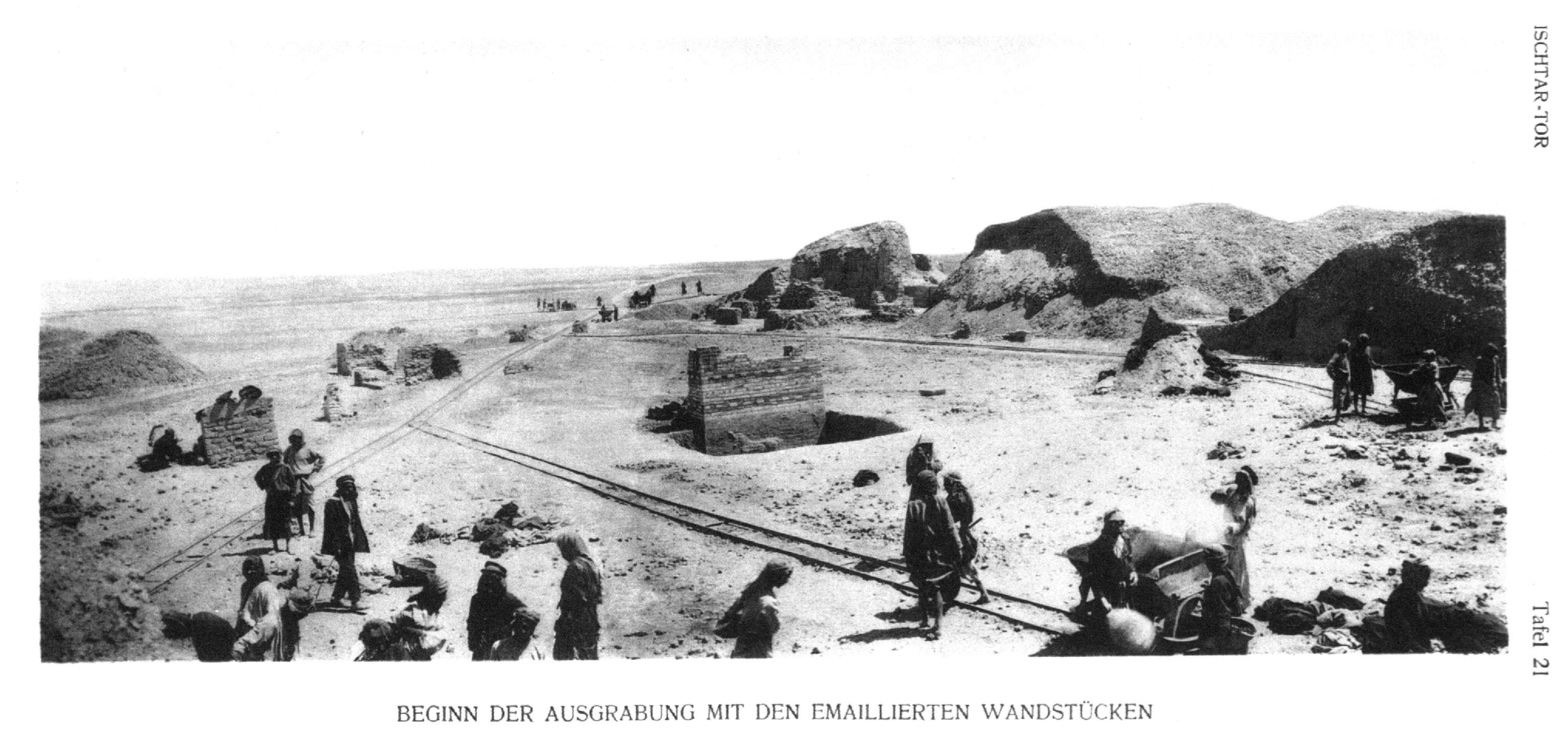
Now pieces of the Gate are distributed among numerous museums, including the Louvre, the Istanbul Archaeology Museum, and the Museum of Fine Arts in Boston (photo).
Not many people know that the Ishtar Gate exists in two other locations in Berlin – in a way. One of these is a villa in the green outskirts of Berlin, in Babelsberg. The Villa Sarre was owned by the director of Berlin’s Islamic Museum in the 1920s, Friedrich Sarre. Sarre retired in 1931, the year after the Ishtar Gate reconstruction in the Pergamon Museum was opened to the public. Apparently Sarre was so taken with the piece that he commissioned a copy of the striding lions from the Processional Way leading up to the Gate – and placed them along his veranda!
You can find shades of the Ishtar Gate at yet another, unexpected place in Berlin… Can you guess where? The answer is on our Instagram channel!
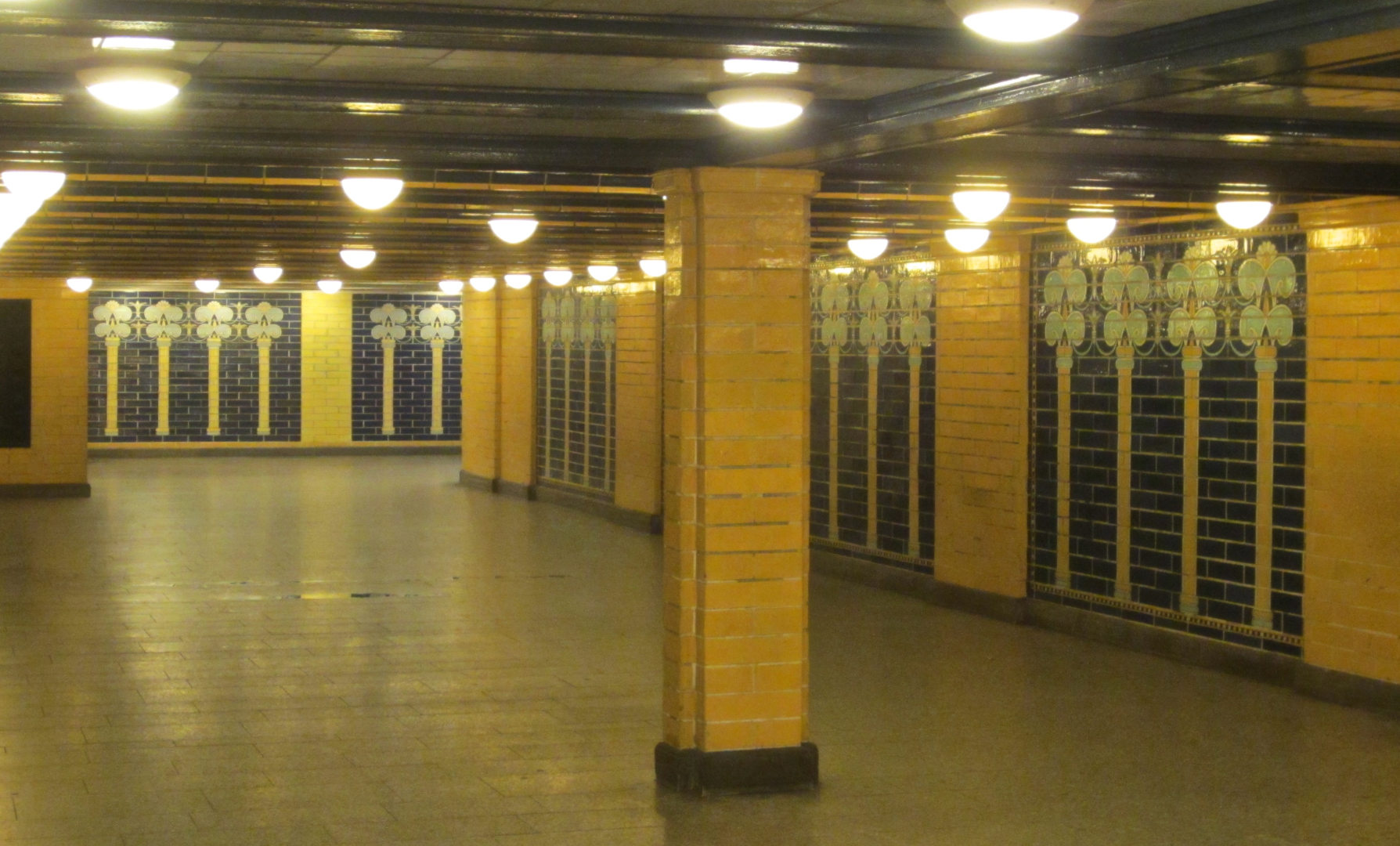
Have you seen the Ishtar Gate too? Let us know your thoughts here in the Comments section, or come visit us on Instagram – we’ll see you there!
Artist Documentaries: Dali, Monet, El Greco
Some great, free, online documentaries about artists have got me thinking about museums in these Corona times. They are a pretty low-tech way (remember television?) to experience some of what we love about museums while we continue, on the whole, to #museumfromhome. Some online museum resources are fun, while others are not much to get excited about. These documentaries seem to me a great quasi-substitute for not only museum visits themselves, but an array of cultural offerings that are lacking right now: things like film screenings, lectures, and art galleries. One in particular really revved me up – I think you’ll like it too!
Salvador Dali: A Master of the Modern Era (MIKOS ARTS)
This is an absolutely delightful look at an artist that I, for one, had fully underestimated. Everyone knows the melting clocks, but what this documentary made clear to me for the first time is the impact that Dali’s art had before it became a cliche. Its connection to his own life – the rocky landscape where he lived, his own dreams and nightmares – was also new to me. And Dali’s breakthrough in Hollywood! Other artists began to reject him as he started to embrace pop culture. Indeed, he helped make pop culture what it is today. This is all told by the bright and charming Alastair Sooke on site at some of the locations in Dali’s personal history, as well as in museums in front of Dali’s paintings. I can’t wait to watch the Picasso episode of the same series!
This is of course great motivation to finally visit the Dali museum in Berlin. Stay tuned…
One mind-expanding artist documentary was I, Claude Monet by Exhibition on Screen (a company to keep an eye on – they make great stuff), which you can buy or rent over the website. I don’t know about you, but I had the wrong impression about this guy. I turns out that those happy sailboats and seaside scenes now used on feel-good products like calendars and greeting cards came out of very dark circumstances. Poor Monet was desperately poor for most of his life, and suffered greatly at the loss of his wife – from hunger and lack of medical care due to extreme poverty – and multiple children. In addition, he was not much appreciated during his lifetime; in a letter to his galerist, Monet once wrote that at least when his art was being excoriated, it was being talked about! – better than being ignored, as it was for a long time. This documentary is narrated purely from Monet’s own letters, voiced with heart-rending emotion by a great voice actor. You’ll never look at a Monet the same way, I promise.
Another free online documentary on my list is El Greco: An Artist’s Odyssey. Narrated by Adrien Brody, what’s not to love? It’s one of many videos in the National Gallery of Art’s Vimeo channel – check it out!
Have you found a good artist documentary too? Let us know in the comments section below or through the Contact page!
Guest Post Los Angeles! Nicole Budrovich shows us her art at home
Welcome to the third in a new series of Guest Posts from museum lovers around the world! Each post is like a mini-tour with an expert on a museum topic they’re excited about. So let’s get to know our guide:

Meet Nicole Budrovich
Nicole Budrovich is a curatorial assistant in the Antiquities Department at the J. Paul Getty Museum in Los Angeles. She is interested in the art of ancient Roman interiors (especially mosaic floors) and the history of collecting.
As the weeks of working from home stretch on, I’ve become keenly aware of the art decorating my apartment. I haven’t started talking to the paintings on the walls (there’s still time), but I have enjoyed reflecting on why I’ve held onto various posters, prints, and drawings, and more importantly, what has made them worthy of display. It’s a question I so often ask of the ancient world—why would a first-century Roman want a certain mosaic or fresco for their dining room or reception hall? What might the work tell us about the room’s use, the (projected?) identity of the homeowner, the fashions of the times, or the supplies of artisan workshops? So, what do my walls say about a museum professional and art-enthusiast living in Los Angeles in the early twenty-first century? If you are at home, take a look around—what insights might your surroundings offer?
First stop, the living room! A space for hosting gatherings in the before times, the walls are decorated with artsy works, but nothing too shocking for more a conservative visitor (i.e. not too much nudity). Behind our drink cart hangs the fabulous street banner from the Getty’s 2018 exhibition “Beyond the Nile: Egypt and the Classical World,”Cleopatra II (or III) is bedecked with a magnificent crown and makes an offering. I love how the banner fills the wall like a true relief, with Cleopatra presiding over our modern libations.
Just adjacent is an even older exhibition relic—a 1973 poster from the blockbuster show of Impressionist and Post-Impressionist Paintings from the USSR. Besides pairing nicely with the banner, this poster has a nostalgic tug since my parents have had an identical print in our living room for as long as I can remember. In 1973 my mom and dad had only just started dating, and they decided to drive from San Francisco to LA for a spontaneous weekend trip. The exhibition was my mom’s suggestion—my dad was keen on the Anheuser-Busch factory tour—but he fell in love with the show and they visited a second time (they never made it to the beer factory). Forty years later, my sister found this poster in a Berkeley thrift shop, on sale for $4.25!
Turn around and there’s another Getty exhibition street banner: Jackson Pollock’s Mural from the 2014 show. Kudos to the Getty design team for filling the banner with this life-size crop of the original, letting the high res photography pop (the Getty still sells old banners, well-worth checking out). From my work-from-home desk, I’ve had lots of time to enjoy its bold brush strokes and paint splatter. In the before times, a guest even asked if it’s “real”—a favorite question about art reproductions, because of course, “yes and no.”
Next to it hangs an original copy of sorts, Pizza in Gold, my riff on Gustav Klimt’s Portrait of Adele Bloch-Bauer, which I made in 2017 for a bi-annual art contest held by Zachary’s Pizza (notice the nimbus-like pizza behind the sitter). A Berkeley institution, Zachary’s was a mainstay of my college years, and in the years since, has become an essential part of every Budrovich-family Bay Area trip. After two years on display, a new batch of paintings were selected, so I was thrilled to reclaim it this past January. Now in my living room, it signals potential guests that I’m worldly and artsy, but also a bit silly (and a loyal fan of Zachary’s Pizza).
We’ll make a quick stopover in the kitchen where this print of a Woman Drinking Coffee hangs over—you guessed it—coffee-making accoutrements. The original painting fills a wall (over four feet square), but this small print still conveys the space and quiet calm of morning coffee. I picked it up at an exhibit in San Francisco in 2013, my first encounter with the artist Richard Diebenkorn. Since then, I’ve fallen in love with his work, beautiful studies of composition and light.
Our final stop is an intimate space, perhaps my favorite art spot in the apartment—the bathroom! For me, it has always seemed a natural location for art—a separate room of getting ready, winding down, and solitary moments. For guests, it’s a room you visit alone (obviously), and something about that privacy makes it a perfect place to showcase tasteful nudes. Our so-called “naked lady wall” has over two dozen sketches, a mix of my sister’s and mine, all drawn from live models (thank you UC Berkeley for hosting the most amazing and affordable life drawing group, aka my church). And on the opposing wall hang prints of Matisse’s cutouts (and another exhibition poster from the MoMA’s incredible 2015 show). It’s no wonder these celebrations of colors, bodies, and forms are still so popular.
A bonus stop! The wonderful (or terrifying?) world of the Zoom virtual background. If a room’s decoration might be a chance mix of nostalgia, aesthetics, and self-advertisement, the backgrounds we arrange or select for video calls are explicitly about a projected identity for a specific audience. With the rise of video calls, our private spaces are suddenly on public (or at least professional) display. As much as I love my apartment’s décor, I prefer the privacy (and playfulness!) of virtual backgrounds. In the past few weeks I’ve been using photos of artist studios, starting with Cezanne’s atelier in Aix-en-Provence and more recently those of Matisse and Monet (with more to come). Perhaps hoping to connect, in some abstract digital way, with these very real spaces of creativity.
Like this Angelino #athome art tour? Share your thoughts in the comments section below or via the Contact page!
All photos kindly provided by Nicole Budrovich.
Guest Post Istanbul! Jaimee Comstock-Skipp shows us the Sadberk Hanim Museum
Welcome to the second in a new series of Guest Posts from museum lovers around the world! Each post is like a mini-tour with an expert on a museum topic they’re excited about. So let’s get to know our guide:
Meet Jaimee Comstock-Skipp
Guest poster Jaimee Comstock-Skipp is a PhD candidate at Leiden University preferring to reside in Istanbul and Tashkent to finish up fieldwork and dissertation chapters. Her interests are in Persian-language manuscript arts produced outside of Iran, in Central Asia and the Ottoman realm.
What’s not to love about a museum occupying a late-Ottoman villa along the Bosphorus? From the ferry ride (which I hope visitors will take from the main touristy hubs of Eminonu or Besiktas ports in Istanbul), the Sadberk Hanim Museum is like the 19th-century domestic architecture that floats by as you travel up the waterway. Pastel, ice-cream colored paint jobs with white gingerbread trim makes one wonder what it might be like inside. Well! Step right in.
The left wing houses an archaeological collection spanning various civilizations passing through Anatolia: Neolithic/Bronze/Iran Ages through the Byzantine period. Among the highlights: a lamp in the form of a satyr from early 4th-century BC that looks like he’s about to launch into an epic kung fu battle (see illustration), eco-friendly/reusable earplugs (looking perhaps more like gilded earwax specimens; see illustration), and a wall of photographed terra cotta oil lamps with some kinky ones interspersed to hold your interest (no illustration provided for concerns of modesty).

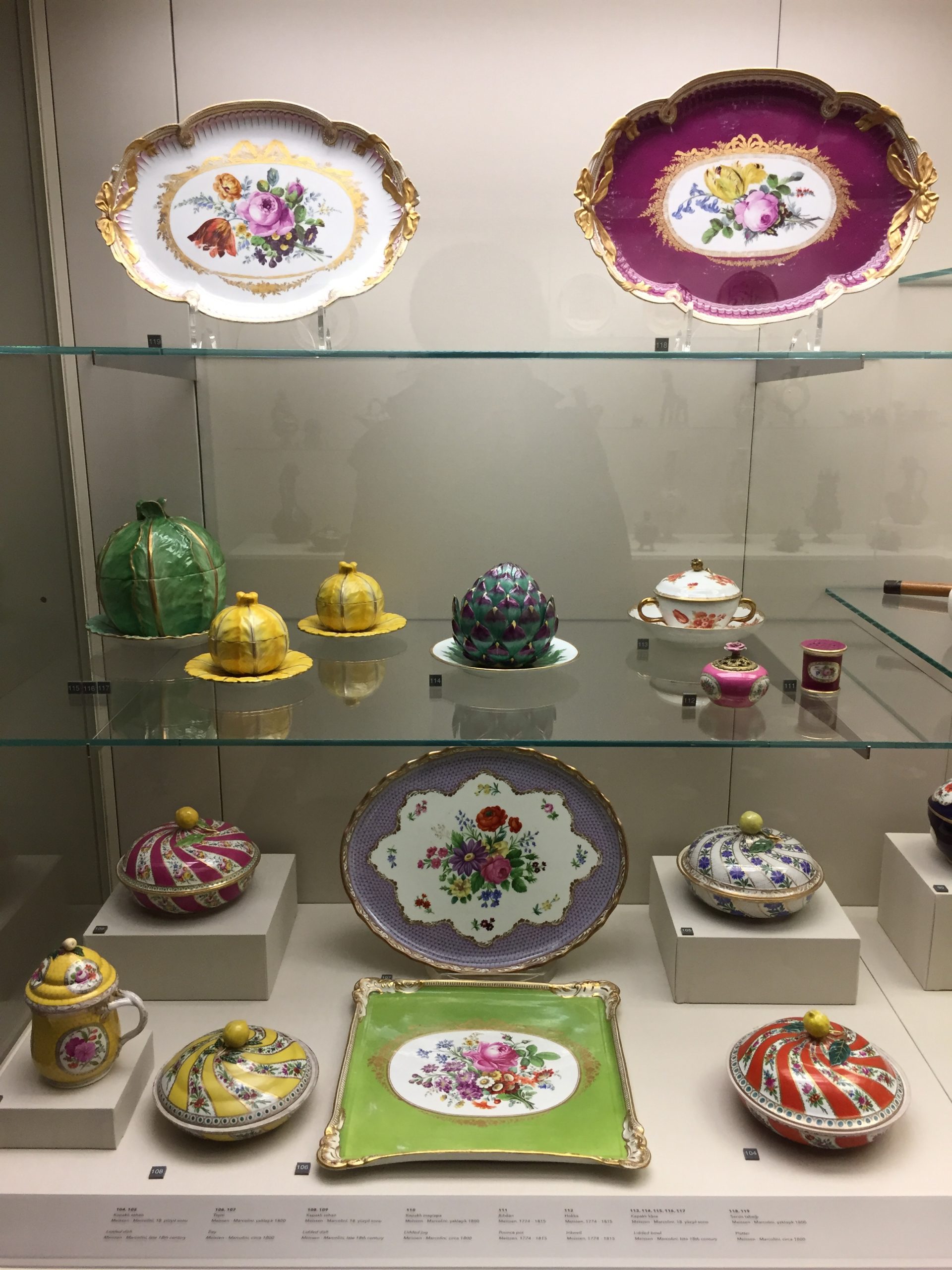
The (post-Islamic) right wing contains objects from the wealthy Koç family who once inhabited the home. Madame Sadberk herself was quite the collector, and her acquisitions give a good overview of pieces from the Islamic world across multiple dynasties and regions. Another gallery contains rows of Iznik pottery and tiles from floor to ceiling (see illustration), and around the corner is a grouping of early-19th century crockery wherein you could put a whole cabbage inside the ceramic cabbage, or an artichoke inside the glazed artichoke on display. (See the illustration for this 3-D trompe l’oeil.) When the present author visited there was a display of Ottoman velvets and brocaded robes for (petite) noble ladies. In looking at the tiles and textiles of this part of the museum wing one is struck by the ambiguity of what is of European or Asian manufacture in the 19th-century exhibits on display. They are all from the heyday of Orientalism and Chinoiserie, after all.

Lastly, as any Turkish school child forced to visit the museum on a class trip or interested visitor will attest, the most memorable element of the collection is the Circumcision Room complete with mannequins in period silk fashion. A small boy in blue bedclothes rests under white satin bedsheets while little bags full of money, given by wealthy guests celebrating the occasion, adorn the curtains of his bedchamber.
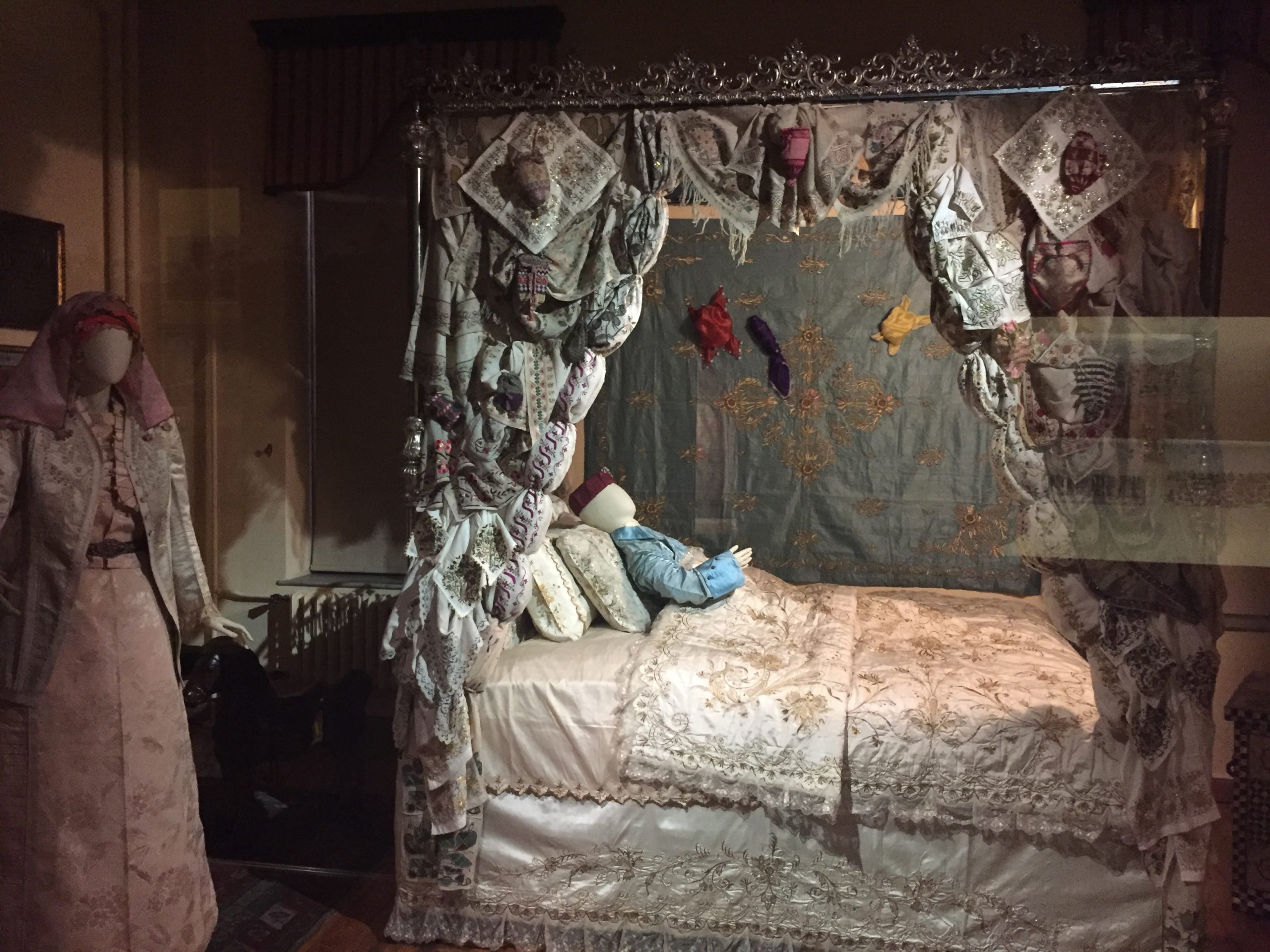
How about this Turkish treasure? Share your thoughts in the comments section below or via the Contact page!
All photos kindly provided by Jaimee Comstock-Skipp.
Guest Post Mexico! Caitlin McQuade shows us the International Museum of the Baroque in Puebla
Welcome to the first in a new series of Guest Posts from museum lovers around the world! Each post is like a mini-tour with an expert on a museum topic they’re excited about. So let’s get to know our guide:

Meet Caitlin McQuade
Guest poster Caitlin McQuade has worked in U.S. museums for over 30 years as an exhibit and interpretation planner. She got to spend two months in Puebla, Mexico in 2019, learning Spanish and visiting the city’s many museums. Visit her blog and say hello!
Puebla, Mexico, has a baroque heart. Built by Spanish colonists, the city’s historic facades pulse and swirl with ornament. Its well-preserved collection of 16th-18th century architecture earned the city UNESCO’s World Heritage label. And out in a new suburb of the city, a remarkable museum describes the global context for the city’s historic center.
The International Museum of the Baroque interprets the style in exhibits and in the building’s design. Architect Toyo Ito lifted the Baroque idea of asymmetric curves and applied it to a contemporary plan. Curled concrete slabs swoop and tilt around the exterior. The walls inside echo this motion and rise to 20 feet (6.5 meters) high.
It all makes a grand setting for a grand story: the Baroque battle against restraint and reform in all the arts, across continents, for a century and a half. The Museum’s planners gathered or reproduced paintings and sculpture, religious objects, decorative arts and costumes, scientific instruments—even a ceiling!—from Europe and the Americas. In eight permanent galleries, these things demonstrate essential qualities of the Baroque: swirling motion; contrasts of light and dark; theatricality.
The exhibit planners made liberal use of digital technology. Multi-touch monitors swarm with examples of paintings from the period, and listening stations offer selections from Baroque composers.

Exhibit text (always in both Spanish and English) acknowledges that European military conquest funded and spread the Baroque style. But the dire consequences to conquered people and their cultures do not appear in the Museum. The galleries effectively celebrate the period’s beauty and spectacle.
After the dramatically lit galleries, there’s refreshment in the bright and elegant restaurant, with views onto the (of course!) swirling pool in an interior courtyard. And, on returning Puebla’s center, the city feels both more historic and more contemporary: for better or worse, globalism isn’t such a new thing, after all.
How about this take on the Baroque and the modern? Share your thoughts in the comments section below or via the Contact page!
All photos kindly provided by Caitlin McQuade.
The Nefertiti Bust between Egypt and Berlin
Our latest video (watch it here!) focuses on one of the most famous pieces of sculpture in the world, the bust of Nefertiti. An artwork from ancient Egypt, it is now housed in Berlin’s Neues Museum (we’ll get into that story below). This bust is the poster child of the museum, appearing on the banner outside, the tickets, and countless gift shop items.
Let’s take a look at the original, ancient history of the piece, before going on to focus on the modern history – how was it discovered, how did it get to Berlin, and what is its importance in our world today?
History
Who was Nefertiti? She was the wife of Akhenaten, the infamous pharaoh who instated a new monotheistic religion of the sun god, pushing out worship of all other gods and promoting himself as the sun god incarnate. Nefertiti served as his queen from the 1350s-1330s BC (nearly 3.5 thousand years ago!). The royal couple lived in Akhenaten’s new capital city of Amarna, roughly halfway between Cairo and Luxor.
Nefertiti appears in a lot of art alongside Akhenaten, as do their daughters (see photo). These are not casual pictures of the royal couple: they have a certain point to make. The official message of Akhenaten’s rule is: the Aten or sun disc is the only god, and he is responsible for all life. Symbols of life are big: ankh, but also fertility motifs, like the swarm of children clambering across their parents, or the paunchy belly and wide, child-bearing hips. These are set off by the slender neck and limbs and oversized head, traits that carry through the whole family portraiture – not because anyone actually looked like this, but because these images were meant to promote the ideology. They’re campaign posters! The royal family’s bodies are vehicles for promoting the party line.
We can see this in the famous bust of Nefertiti as well. The long neck, oversized head – here exaggerated even further by the towering crown she has on, and the forward projection of the neck and chin. These are traits we see in the whole family’s portraiture; here it’s actually nothing unusual. Although the current reputation of this piece is that it is unparalleled—and it is unique in some very important ways—it isn’t unique in its sleek beauty, as we might normally think.
Discovery
How did this piece get its reputation and become such a superstar?
We have to go back to the 19th century: the time of the so-called Big Digs, archaeological excavations on a huge scale. Competition among nations to find great artworks was running rampant!
Germany’s most influential group supporting digs was the German Oriental Society. They were also funding excavations in Babylon that would result in the Ishtar Gate being brought to Berlin. Co-Founder of the society was James Simon, a textile industry magnate in Berlin (for whom the new visitor center on Museum Island, the James-Simon-Galerie, is named). Simon decided to fund an excavation in Egypt, at Akhenaten’s capital, Amarna (then called Akhetaten), with his own personal money and even acquired the excavation permit himself. In return, Simon was granted sole ownership of the German share of the finds. (Back then, finds were often divided between the country where the excavation took place and the country whose archaeologists were working there; this arrangment was called partage, from the French word for “sharing.”)
This was an incredible deal for James Simon, and it would soon become more relevant than anyone anticipated. In the first year of digging at Amarna, 1911, the archaeologist in charge of the dig, Ludwig Borchardt, didn’t find any spectacular objects. But the second year more than made up for it. Borchardt discovered numerous portraits of Akhenaten’s family, a spectacular find.
How was the Nefertiti bust found? In 1912, Borchardt was excavating at Amarna in the ruins of an ancient house. The house had been identified as belonging to a sculptor named Thutmose. (His name and job title were found on an ivory horse blinder found nearby… a standard artist’s studio??). A bust of Amenhotep IV had already been found in Room 19, as well as other interesting fragments. Then… they saw a “flesh-colored neck” in the rubble… The excavators put their tools aside and, using their hands, revealed next the lower part of the bust and then the blue headdress. The portrait of Nefertiti was nearly intact. Borchardt noted that the colors were still so bright, they appeared “freshly painted.” Missing parts of the ear were sought out and discovered; the missing eye was also sought, but never found. Only later, Borchardt wrote, did he realize that this eye had never been set into place; the bust had never been finished. Just like Borchardt’s dig: he never published a full report on it, and couldn’t continue at the site after World War I broke out in 1914.
The bust was taken out of the country in murky circumstances. Borchardt had to share his finds with the local antiquities ministry, but how the discussion of these finds went is unclear. From Borchardt’s own remarks in letters to friends, though, it seems he tried at the very least to benefit from leaving out information: he listed the bust along with other plaster sculptures he wanted to export, hoping that no one would ask what it was, and simply accept the seemingly better stone objects for Egypt. At the personal inspection of his finds, he prayed that the inspectors wouldn’t open the storage box housing the bust. He even wrote that he had chosen a photo of the piece “so that one cannot recognize the full beauty of the bust, although it is sufficient to refute, if necessary, any later talk among third parties about concealment.” (link) He also warned his German patrons not to blabber about the finds until they were safely out of Egypt—because if the Egyptians got wind of the superb artifacts, they might want to keep them.
This does not show Borchardt’s morality in a good light, to put it mildly. Although this was another time, with other customs, it is hard not to look back on it from today’s perspective without qualms.
In 1920 James Simon gave the bust, along with other Amarna finds, to the Berlin museums.
Current Debates
The circumstances in which the bust was discovered and taken out of Egypt to Berlin have led to one of the two big current debates surrounding this piece: who owns it really? Not just because of the possibly covert operation, but because Egypt itself at that time was ruled by the British (called the Veiled Protectorate), and the antiquities were administered by the French. So Egypt, and Egyptians themselves, didn’t have a say in what became of their cultural heritage.
Although Egypt has formally asked that the bust be returned to Egypt, the Neues Museum is not reacting. That the Museum celebrated the 100th anniversary of the discovery in 2012 with an exhibition on Amarna is not just a tribute to research, but to ownership.
The other big current debate about the bust is very modern, centering on new technologies for 3D scanning and printing objects. In 2016, two artists claimed to have made a surruptitious scan of the bust in the Neues Museum and worked it into a very precise digital 3D model. Since then, it has come to light (largely through the work of Cosmo Wenman) that such a scan could not have been made, and the 3D model probably came somehow from the museum itself. Since then, this model has been made public—not by the museum itself, but by Wenman, arguing that “museums should not be repositories of secret knowledge”—so that it can be downloaded and 3D printed by anyone with the resources to do so. For museums.love, Modicolitor printed a beautiful purple copy!
What do you think of the Nefertiti bust’s history, display, and 3D incarnations? Share your thoughts in the comments section below or via the Contact page!
Links
Object files of the 3D scan of the Nefertiti bust.
The photos of the Nefertiti bust and how it is displayed today (April 2020) used in our video under the CC 3.0 and 2.0 licenses.
Detailed article about the ancient history and the discovery of the bust.
Museum Director Seyfried reviews the documentation of Borchardt’s discovery and export of the bust.
A consideration of the repatriation claims in light of colonial history.
Plaster cast of the bust for sale by Berlin’s Gipsformerei.
Excerpt of the excellent book by Joyce Tyldesley on all these issues, titled Nefertiti’s Face.
Excellent article and gallery of rare archival photos of the rediscovery (in German)
Revelation by Cosmo Wenman that the artists’ claim to have 3D-scanned the bust is a hoax.
The whole riveting story of Cosmo Wenman’s quest to solve the mystery and freely publish the 3D model of the bust.
The hugely variable virtual museum tour
Today we continue our adventures in online museums! See my recent list of some favorites, paean to Google Arts & Culture, and pre-#MuseumFromHome list of online exhibitions.
In the current surge of online museum offerings, “virtual tours” and the like are being touted by ever more institutions. But what does that mean? It turns out that everyone has a slightly different idea of what a virtual tour is. My last couple of blog posts show that I’m a sucker for one specific kind of “virtual tour,” that found on Google Arts & Culture: a combination of “street view” navigation through the actual museum galleries, along with object-specific detail photos and information. To me, this represents just what I like about museum visits in person, in a pretty great digital approximation: you experience some of the museum atmosphere, see how the objects are displayed (a longtime obsession of mine!), AND you can get up close to the objects and read their labels, just like you would in real life.
But there are other ideas of what a “virtual tour” can be. Some institutions offer “tours” that are just 360º walk-throughs of the building. The Smithsonian, for instance, has several dozen of these, which I was excited about until finding out what they actually are. On these tours, you may get an all-around view of the galleries, but you can only get as close to an object as the “street view” image allows, and generally this feels like you’re standing at least 8 feet away from the object. (The Smithsonian website notes that you can click on a camera icon to zoom in on an object, but throughout numerous galleries I didn’t find such an icon.) So you can’t really see any object beyond its most prominent features, and you definitely can’t read any label that might be next to it! It’s also frustrating to try to navigate closer to a display that’s caught your eye: the 360º image just doesn’t allow fine enough movements to steer effectively. There’s one single line you can “walk,” and you can look around as you go. In summary, this model frustrates me because it omits the one thing that I would say museums are primarily here for: the objects. This is why I find it so crucial that Google Arts & Culture combines Google’s revolutionary Street View imagery with incredible high-resolution photos of and essays about certain objects. Because why would I want to stroll through a museum without being able to see and learn about the exponents?
The National Museum of Computing offers virtual tours somewhat along the street-view-plus-objects lines, and should definitely get props for that! In this version, there is one additional benefit and one additional drawback. The benefit is a super cool “dollhouse” of the museum that shows you all the rooms in miniature, complete with their objects! This is an awesome way to get an overview of the museum, and to see where you’re standing in the virtual tour. The downside I discovered is that generally there is only little information on offer; certain objects are marked with a YouTube link to a relevant video, which is really neat, but even basic object information isn’t included. Or the link goes to a website that can’t be found. Or just the object name appears (what are Dekatron Valves?).
Yet another model is totally different and, in my opinion, mind-blowing! The British Museum teamed up with Google to make a beautifully designed, 3D graphic timeline called The Museum of the World (a title that aligns with the BM’s controversial aspirations to be a universal museum). You can zoom along the timeline from today into the past, on a foreshortened path like a road receding to the horizon. Each continent has its own color and position on the timeline, so you can compare across cultures or select just one. It’s a very effective, attractive design. Colored points on the timeline represent objects you can click on to get more information. And this too is superbly done: clicking on the object pops up a window with a photo, short essay, Google map of its location of origin, “related objects” section, and an audio file of a staff member talking about it! This is a truly fun and fabulous mode of discovery.
Then there are the tours that require technology I don’t have. The Louvre lists a number, but they require some kind of Flash that none of the various devices and OSes in my home has.
Finally, there are tours led by real people in museum galleries and posted online as a video or streamed on a communication platform like Zoom. I took part in a tour offered by the Schirn Kunsthalle Frankfurt – it was tremendous. Personable, knowledgeable guide Sonja took us around the galleries of the exhibition “Fantastic Women” just like on an in-person tour, using her smartphone to record herself as she was talking and the objects she was talking about. I was astounded how much it was like being in person at this beautiful exhibition on women surrealist artists. I hope many more museums offer this version of a virtual tour, even after the museums reopen!
There are some amazing things happening in the land of online museum experiences! To help it progress, I’m in favor of using the word “tour” to describe something more than just a 360º image. Tours, as well as the museums that offer them, are so much more than just a building you can photograph from inside.
Please share your own favorite online museum experiences on the Forum or the Contact page!
Museums go online! Favorite sites
In the last post I waxed poetic about Google Arts & Culture as an Ali Baba’s Cave of Wonders for Museum Lovers stuck at home. (And even before the #stayhome days, I made this list of online exhibitions!) Now I’d like to share some of my favorite other online museum sites with you – and I’d be delighted to hear about your own favorites on the Forum or the Contact page!
- Dallas Contemporary‘s online program #DCfromHome includes an awesome set of at-home art activities for the young-at-heart. Glittery slime is on the top of my to-do list! The guides to analyzing of two stunning artworks together (with kids or anyone else!) are fantastic.
- Smartify: devastaingly cool app. While it can do the party trick of scanning an artwork and telling you what it is, it’s SO MUCH MORE than that. My favorite thing are the free tours: Mary Bead takes you through the Royal Academy collection in London, artists narrate slideshows of their own work – it’s incredible!! This Guardian article mentions a number of tours and exhibitions that are now free on Smartify.
- How about the old-fashioned telephone? I just love this idea by the Museum Catharijneconvent in Utrecht, based on their current exhibition about miracles (in Dutch): call their number to hear about a miracle that happened to a staff member – or to request a miracle!
- The Frick Collection in New York lets you walk through the museum virtually, and click on artworks along the way to see more information and immensely detailed photos of them! Similar to the Google Arts & Culture format – I’m a total sucker for this.
- Kennedy Space Center Visitor Complex in Florida has a series of wonderful short videos on their Facebook page: interviews with astronauts, videos of rocket launches, and more. My favorite are the mini-tours (between 3 and 10 minutes long) led by their upbeat Educator Stephen. He’s great! Check out this new one on moon rocks!
- The American Museum of Natural History in New York also has a stupefying array of videos and virtual tours on their Facebook page. Get lost in the giraffe dioramas or watch a video on the history of primates!
This is just a small selection of my personal faves; I’ll post more as I keep exploring. Let me know about your own favorites on the Forum or the Contact page!
The closest thing to a real museum visit: Google Arts & Culture
I can hardly express how excited I am about Google Arts & Culture, especially in these stay-at-home times. And no, this is not a paid advertisment! I really am just that impressed. It’s just got so many advantages, it blows my mind. For us Museum Lovers, it is a treasure trove.
What is Google A&C? It’s a website that contains collections of all sorts of amazing cultural material. For example:
- You can explore the “Historical Figures” category, in which clicking on a person of your choice opens a photo and short introductory essay, as well as a picture gallery of related material.
- You can visit incredible culture heritage sites around the world in Street View mode! Check out Petra, where you can stand right in front of the famous Treasury that starred in Indiana Jones! The Taj Mahal is another beautiful Street View site.
And, most relevant for Museum Lovers’ purposes, it’s got an astounding array of museums that you can virtually visit. These virtual visits are so beautifully crafted, I don’t know anything even close to this good anywhere else online. Individual museums just don’t have the resources to achieve the sort of wide-ranging and perfectly integrated experience that Google A&C offers. What do I mean? well…
- The number of museums you can visit online is big, and getting bigger. Currently there are 46 world-class museums on the roster. Even one of these can occupy you for hours on end; visiting all 46 online would take months!
- The format seamlessly integrates Street View mode inside the museum (this totally blows me away) with luscious, high-resolution photos of individual artworks. It is SO COOL to be reading about an object and looking at the photo of it, and then to click on the “View in Street View” button to see how it’s displayed in the museum. While this isn’t available for every object, it is an AWESOME feature; it’s what I would call as close as you can get to a real museum visit!
- Did I mention the luscious photos? They are breathtaking. The quality is phenomenal – you can zoom in for days! Take this miniature painting in New Delhi: you can count Krishna’s eyelashes! I suspect that Google A&C took their own photos of the objects in many cases, because this is a quality that most museums just don’t have lying around their image archives (with some notable exceptions like the Met – hello, pinhead-size gold granulation!).
- Each highlighted object – not all the objects in the museum, nor all the ones you can see in Street View, but a selection of highlights – is accompanied by an excellent short essay about it. In the Strong National Museum of Play, for instance, a James Bond video game for Commodore 64 is explained within its historical context (who knew??). The information presented in these essays is, as far as I can judge in my areas of expertise, not only correct (short of a few typos I’ve seen), but accessibly written. I wonder who writes these; is there a staff of trained cultural historians back at A&C HQ writing these things?
This is all to say, Google A&C offers an unparalled online cultural experience. I even used its excellent presentation of the Altes Museum in Berlin in a question on a take-home exam for my university students. (“Select two of the statues exhibited in the Altes Museum’s rotunda, shown in the digital exhibition by Google Arts & Culture. Discuss how the statue portrays the god or goddess in connection to what you know about the divinity’s realm of influence, powers, and attributes…) While there are some other great online initiatives from museums now – ramping up in the current flatten-the-curve era – Google A&C is my favorite for the above reasons. A selection of some of my other faves will appear in the next blog post.
Take a gander yourself, and have a ball!




